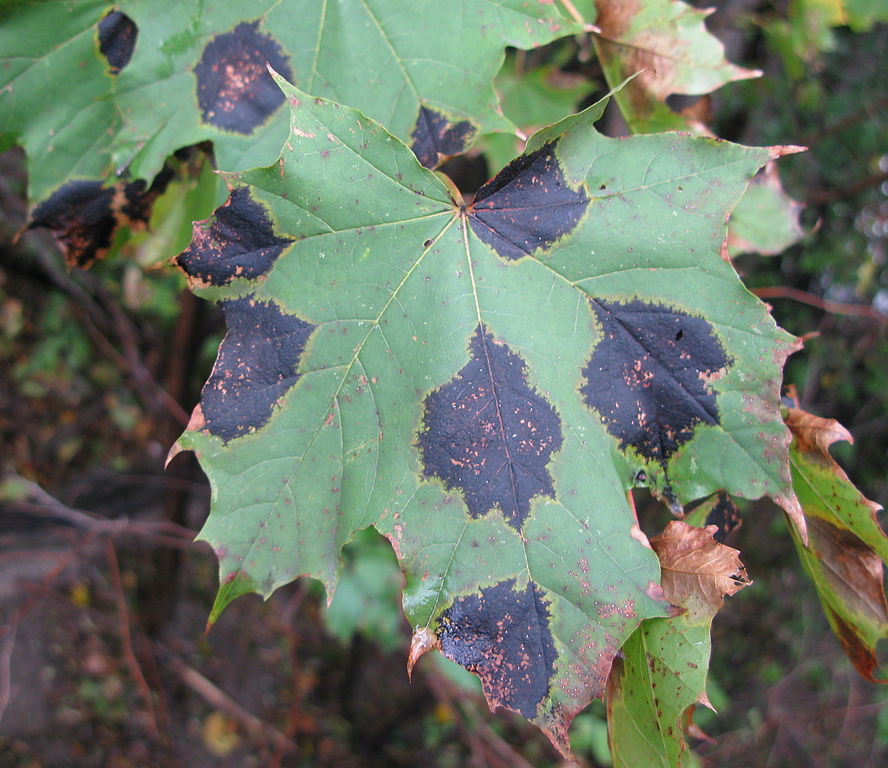Introduction
Maple tar spot is a fungal disease that affects many species of maple. The disease occurs most frequently in North America and Europe. It is caused by three related fungi: Rhytisma acerinum, Rhytisma americanum, and Rhytisma punctatum. Symptoms vary between the three pathogens, but they all produce fungal spots on host plants that resemble tar. While maple tar spot occurs on many species of maple, it is most common on Norway, red, and silver maple.
Hosts
Maple tar spot afflicts many species of maple, including big leaf, mountain, Norway, red, rocky mountain, silver, sugar, and sycamore maple. It may also occur on boxelder, willow, and tulip-tree.
Disease Cycle
Disease pathogens infiltrate susceptible trees, and overwinter on infected leaves. In spring, as new leaves are unfolding, the fungal tissue in the infected leaves ripens. When conditions are favorable, the spots split and expel small, needle-like ascospores that are disseminated by the wind. The ascospores land on the leaves of susceptible trees, where they germinate, and penetrate the leaf tissue, initiating a new infection. On infected leaves, chlorosis occurs, resulting in the appearance of localized yellow spots. As the disease progresses, apothecia form on the leaves, giving rise to brown and black lesions that resemble spots of tar.
Symptoms
Initial symptoms develop on infected leaves in early summer. At this stage, the leaf spots are light green to yellow green. As the growing season progresses, the spots enlarge, and the yellow coloring intensifies. On red and silver maple, a black lesion usually develops in the center of each yellow spot. These black lesions appear from mid-July to early August. The black lesion grows in diameter and thickness until late summer, when it resembles a spot of tar. The surface of the lesion may feature a pattern of wavy indentations, or ripples. Late in the growing season, infected leaves may drop early. Not all infected leaves are shed. Defoliations are often minor.
Symptoms differ on striped and Norway maple. On these trees, twenty to fifty small spots appear on infected leaves in late July or early August. On striped maple, the spots enlarge slightly. This type of tar spot is often referred to as speckled tar spot. On Norway maple, the spots grow significantly. They eventually coalesce, yielding a black mass that can measure up to 1 ½ inches in diameter. On Norway maple, the surface of the black mass may be slightly roughened or smooth.
Management
- Maple tar spot does not cause significant damage to trees. The most effective management practice is raking and destroying infected leaves in fall. This will reduce the number of spores available the following spring.
- Mulching infected leaves will destroy many of the spots before they mature. As a precaution, the mulch pile should be covered, or shifted before new leaves emerge in spring.
- Fungicides are available for controlling maple tar spot. Applications should be performed in spring. To ensure success, complete coverage of the leaf tissue is required.
Photo courtesy of GFDL/CC-by-SA 3.0


